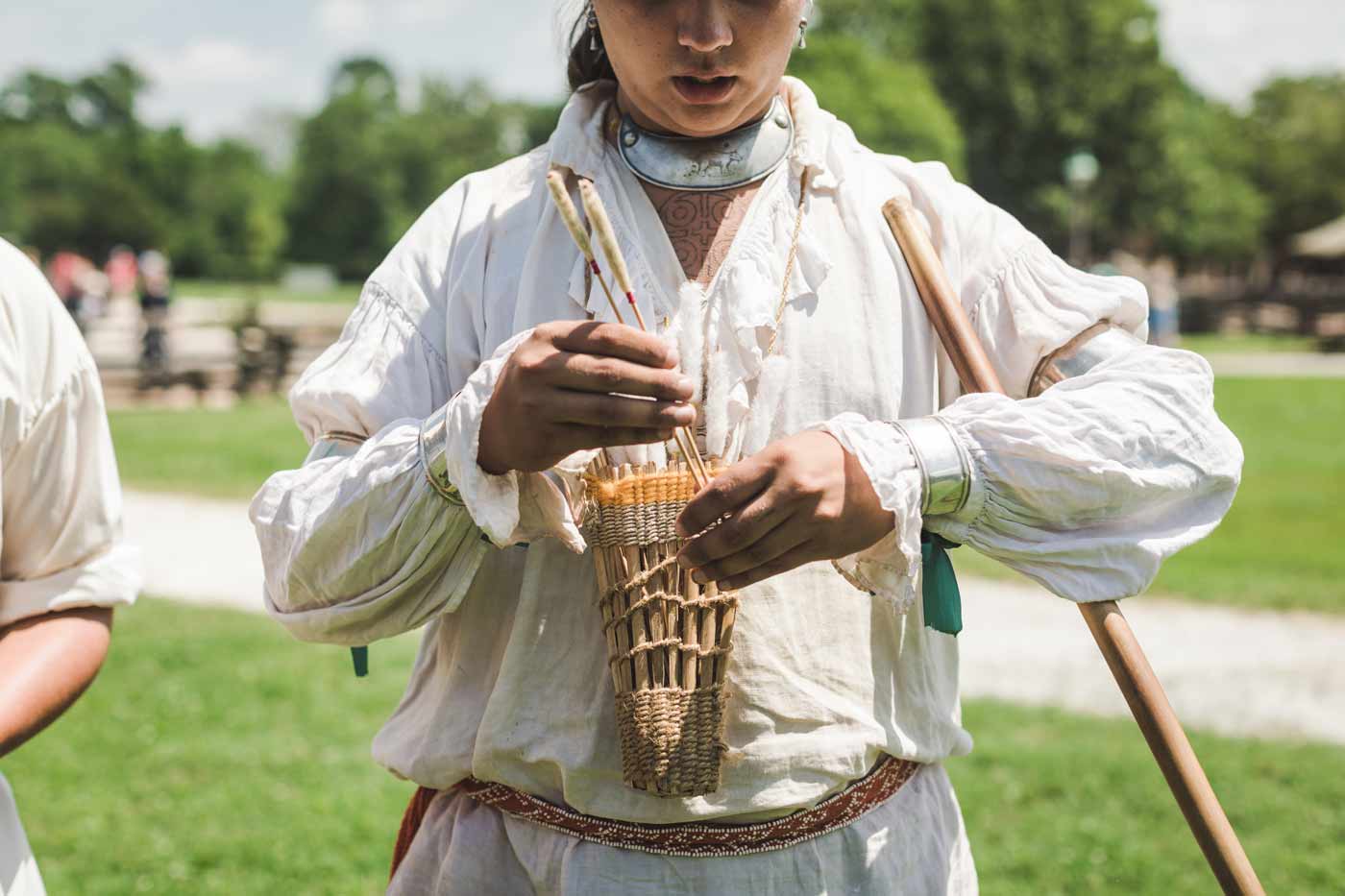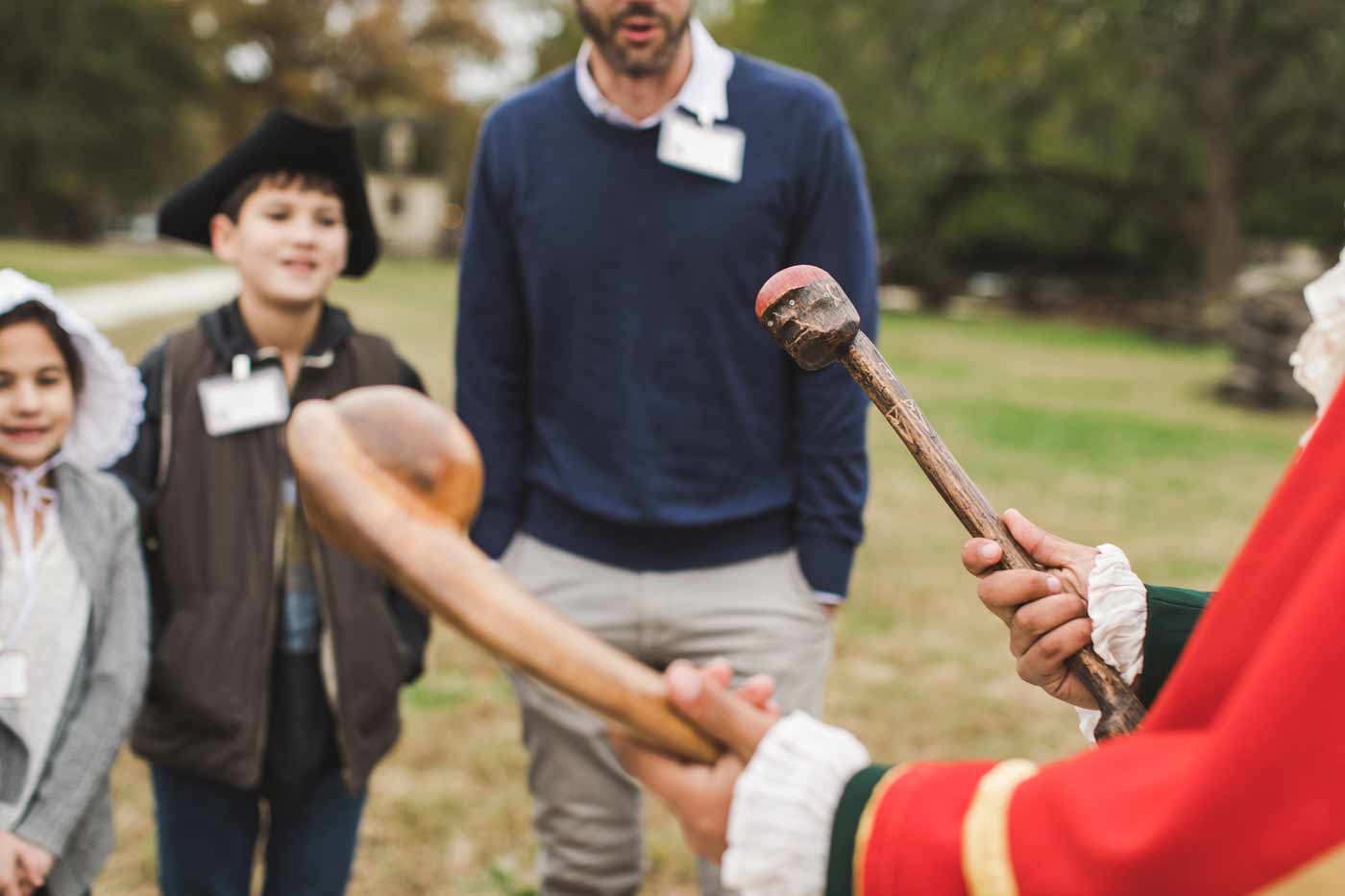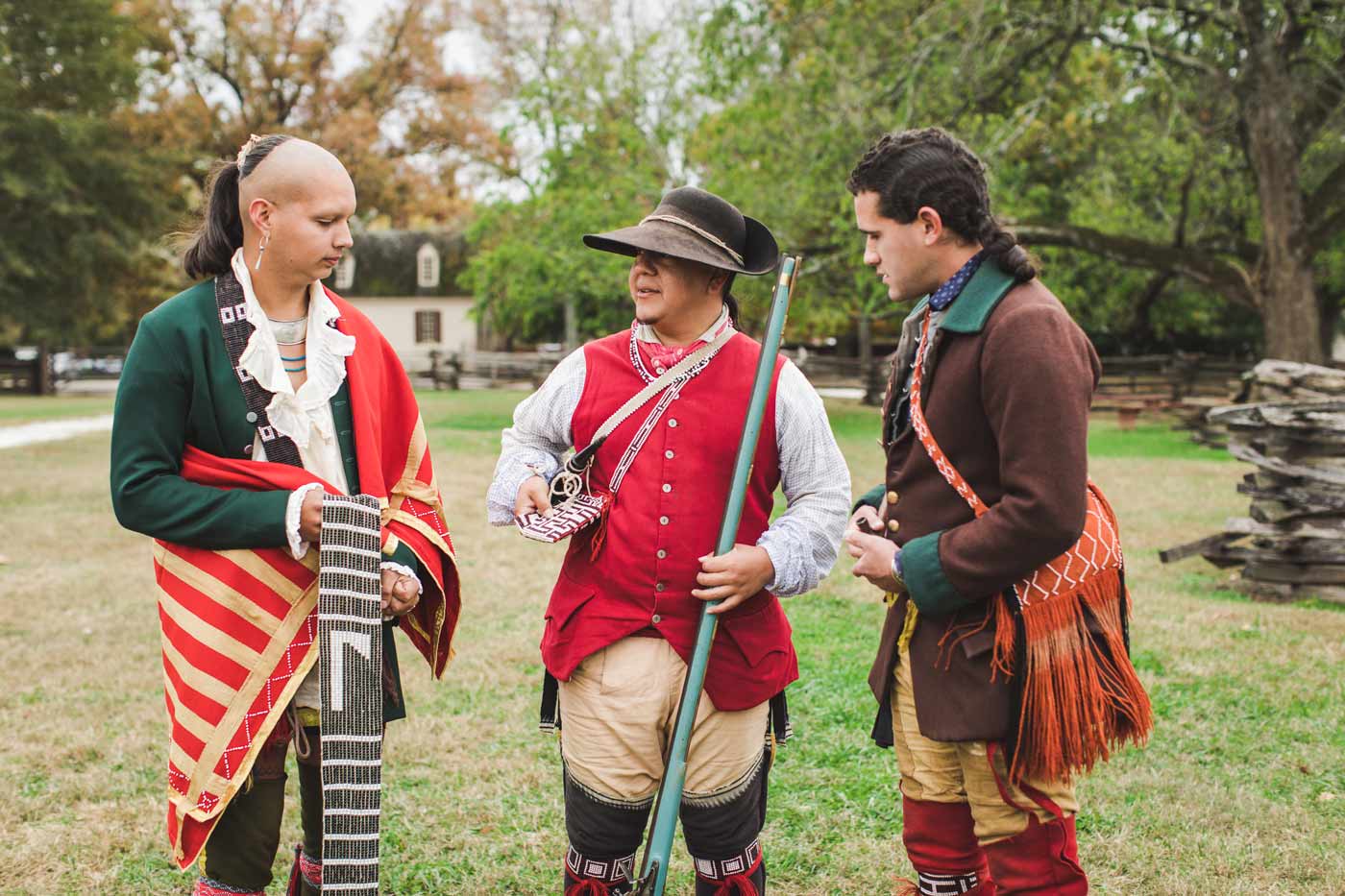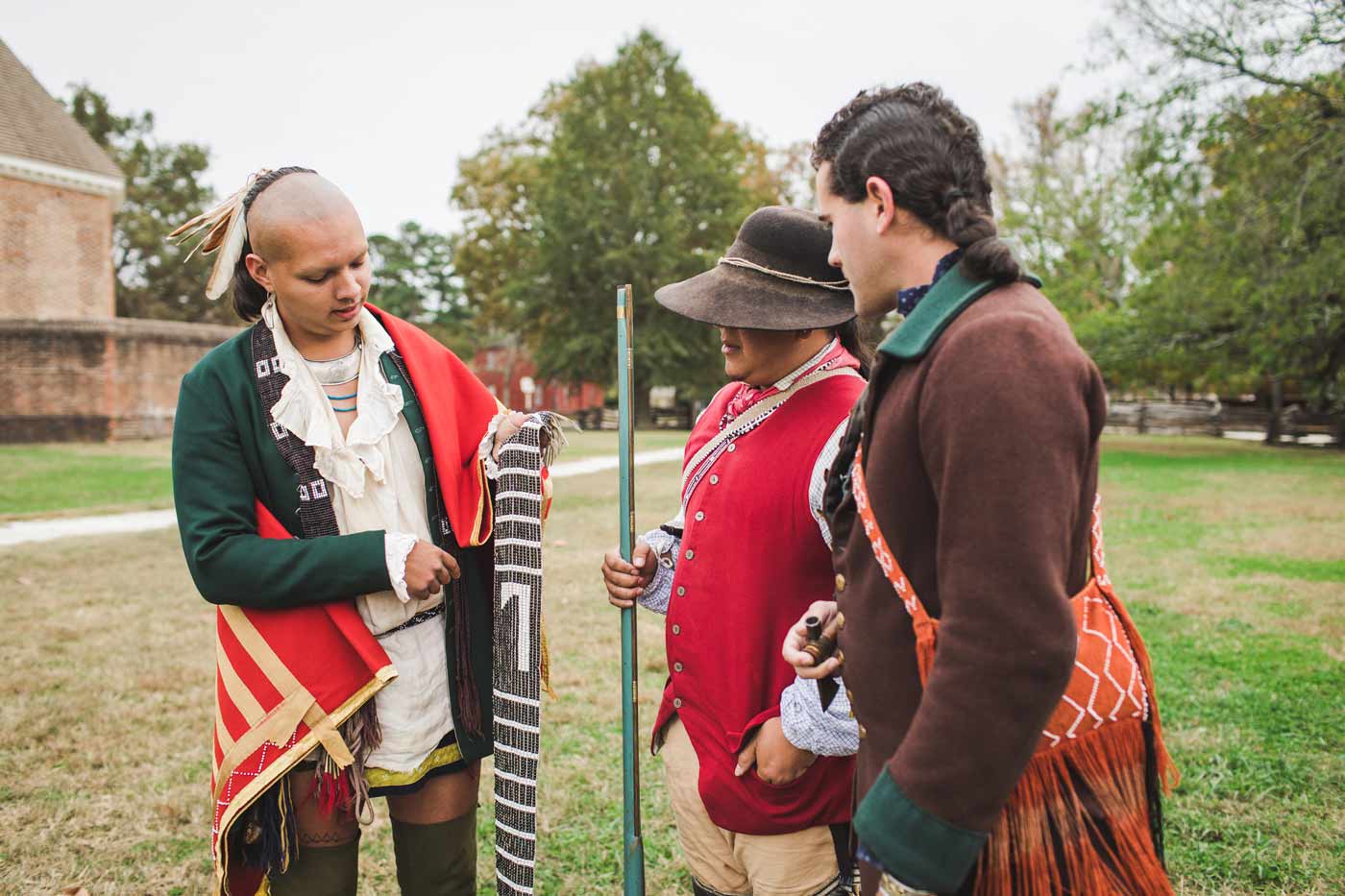Our American Indian Interpreter unit spearheads programming focused on telling the story of the many different American Indian tribes who lived in Tidewater, Va. during European arrival, or the sovereign tribes who sent political delegations to Williamsburg during the colonial period. Some of this programming includes speaking on the Governor’s Palace grounds about the Shawnee “princes” staying at the Palace in 1774-75, just before Governor Dunmore’s abrupt exit;discussing politics of the day at the American Indian delegation in the Magazine yard; and meeting with guests at the Coffeehouse stage for an in-depth look at a specific aspect of American Indian life with our, you guessed it, American Indian Life Series.
All of these programs give guests an opportunity to speak candidly and openly with someone hailing from a contemporary American Indian community descended from those historical communities. Guests are often eager to sit and talk to satisfy their curiosities about American Indian tribes during the colonial period. Here’s just a small sampling of the top five most asked questions we receive from guests. We can’t wait to see you in person to hear more of your questions. And don’t worry — no matter how many times you ask, we are more than happy to sit and talk with you again when we reopen!

1) “Would you have really been here back then?“
Most definitely and frequently! Local tidewater tribes, like the Pamunkey, traveled to the city almost daily. Boys from these local tribes also lived in the city while attending the Brafferton Indian school until its closing during the American Revolution. Additionally, a number of tribes from the southeastern and northeastern regions of the United States travelled to Williamsburg regularly for political negotiations. Tribes like the Cherokee and Shawnee sent emissaries to Williamsburg and were treated to the niceties and hospitality that would be afforded to any other “foreign” diplomat. Virginia Gazettes, tavern notices, and treaties give us a snapshot of who was here, for how long, what they were doing, and even what they were wearing.
2) “Why do you wear a mix of Indian and English clothes?”
Technically, it’s all American Indian clothes, since an American Indian is wearing them! in much the same way that English society absorbs aspects of cultures they interact with such as tea, guns, silk, beaver hats, cochineal, and maize, American Indians also absorb things that they find new and exotic.

3) “Did the tribes get along back then, either with each other or the colonists?”
Absolutely! Although we do know about the conflicts and struggles that came with interactions between newly arrived European colonists and American Indian tribes, there are many instances of friendly and familial interactions as well. Sometimes there are periods of peace and comradery, and then there are times of violence and destruction. For many of the tribes Europeans came into contact with, war is simply a means of alleviating growing tensions between individuals rather than entire nations—a step in the diplomatic process. Times of conflict could be over in as quickly as a single battle, and immediately proceed to talks and treaties. Once treaties were agreed to however, past offenses were forgiven and forgotten to keep from sullying the new alliances, both with other American Indian nations as well as European nations.

4) “What side did you join during the American Revolution?”
Our side! For reference, American Indian nations are sovereign; they do not owe allegiance to any external parties other than any compacts or treaties in which they engage. At the time, many of the tribes have citizens fighting on both sides, and if they do throw their lot in with one or another, that allegiance could change several times. If you could change your bet while watching the race, wouldn’t you? In the end, the tribes will seek to find the optimal solution for them and their people.
5) “Are you all ‘real’ Native Americans?”
In short, yes, we each come from our own nations all around the country.

About us
Talon Silverhorn is a citizen of the Eastern Shawnee Tribe of Oklahoma, and has worked as an American Indian interpreter at the Foundation for three years. He is an avid archer and enjoys making historical reproductions and discussing tribal government.
Warren Taylor is a citizen of the Pamunkey Indian Tribe, and has worked as an American Indian interpreter at Colonial Williamsburg for five years. You may recognize him from the television series “Jamestown.”
Kody Grant is an enrolled member of The Pueblo of Isleta and has worked as an actor interpreter for five years at the Foundation. Previously, he contracted with the American Indian Initiative for seven years while working within the historical and cultural education field in his other community of the Eastern Band of Cherokee Indians via the Cherokee Historical Society. In his free time, Kody enjoys experimenting with new recipes in the kitchen.
